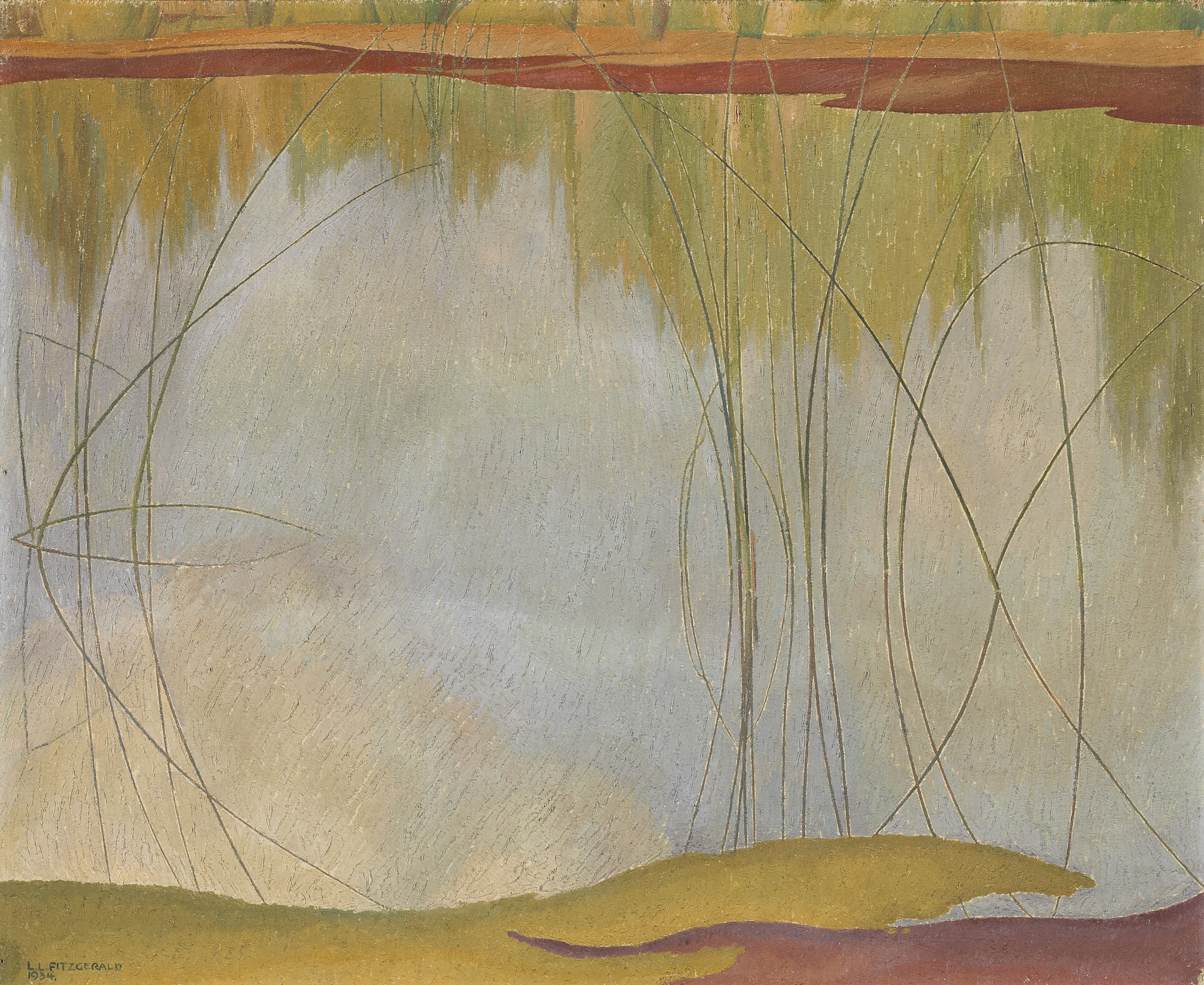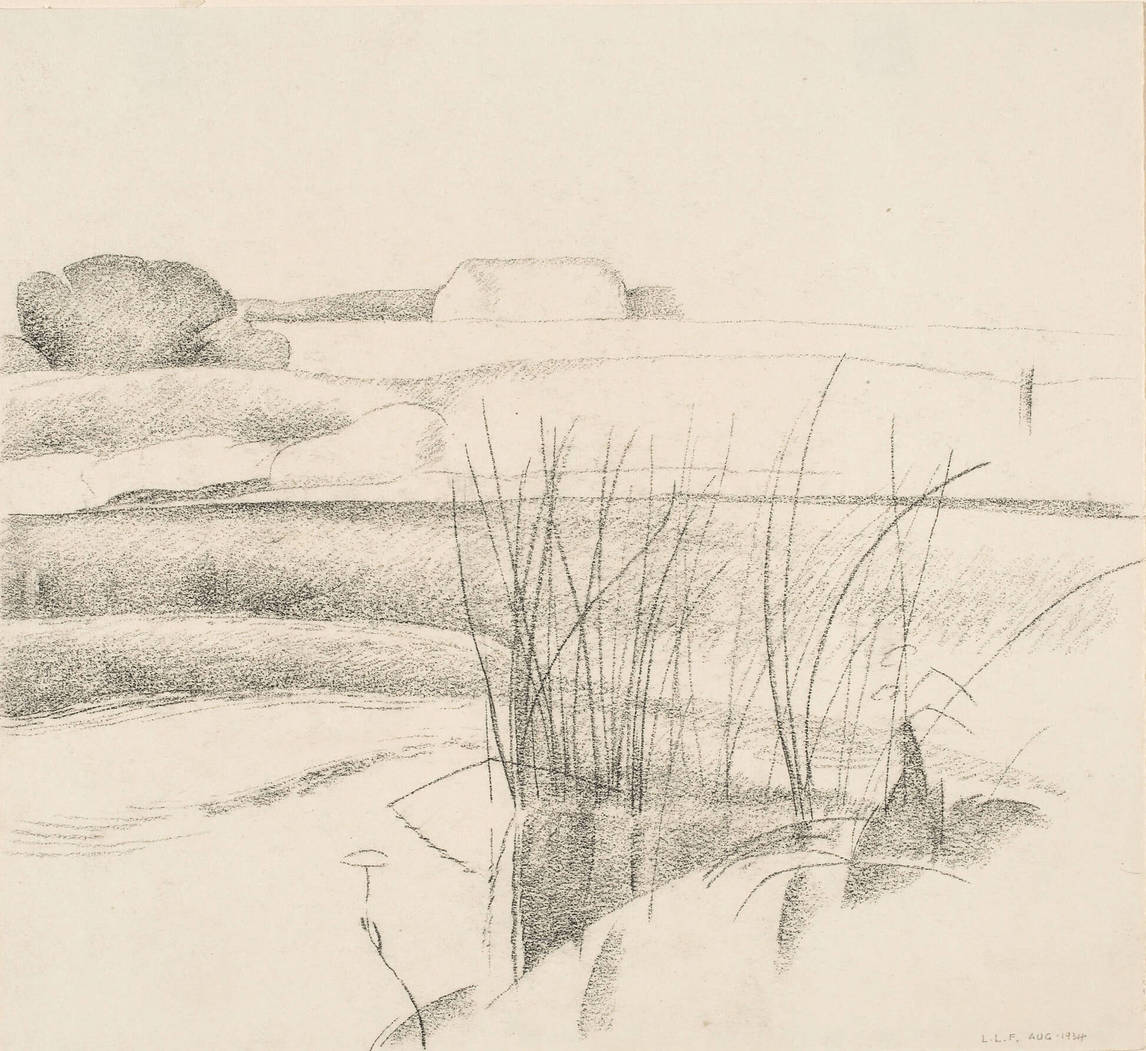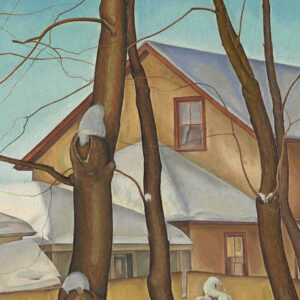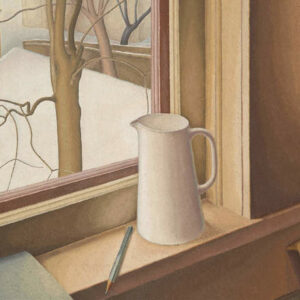The Pool 1934

Lionel LeMoine FitzGerald, The Pool, 1934
Oil on canvas, mounted on Masonite, 36.2 x 43.7 cm
National Gallery of Canada, Ottawa
The years from 1927 to 1934—bracketed by Williamson’s Garage and The Pool—may be considered FitzGerald’s most inventive period. During this productive time, the artist completed at least a dozen oil paintings at a high level of achievement, which solidified his national reputation as an artist of consequence. Of these, The Pool moves FitzGerald’s art furthest into the territory of advanced Canadian modernism.

The idea for The Pool may have begun in August 1934 when the artist dated a charcoal sketch of Pepper’s Farm. While this work is quite typical of his prairie landscapes, FitzGerald used the central water and reeds to create a composition for the painting that was radically different from his earlier works.
Viewing The Pool is like looking through the zoom lens of a camera. The landscape surrounding the body of water appears only as the framing edge at the top and bottom of the picture. The viewer’s field of vision is restricted to a small expanse of water, the reflection of the sky, and a few gently swaying grasses. The geometry of the reeds is accentuated by their mirror reflection in the water, making it difficult to read exactly where the surface is located. Without precedent in FitzGerald’s oeuvre, The Pool is virtually subject-less, focused as it is on abstract pattern. To a great degree the artist eliminates three-dimensionality to emphasize the picture plane as a flat surface—a central modernist conceit.
Art historian Liz Wylie has observed: “One cannot help but be fascinated at how FitzGerald’s formal technique performs in tandem with and in service to the meaning he wishes the painting to convey. The flecks and carefully applied, small strokes of paint are used consistently to depict each item in the composition—sky, water, grasses—establishing a visual unity to the picture, and implying a metaphysical unity among these elements.”

 About the Author
About the Author
 More Online Art Books
More Online Art Books
 Acknowledgements
Acknowledgements